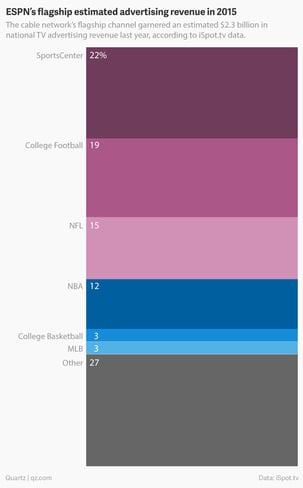Big sporting events and live streaming are a match made in heaven, but what about local sports?As viewing habits evolve and even more consumers opt for the freedom and flexibility of OTT, new broadcasting opportunities have emerged.
Demand for local sports broadcasts rises
In 2002, Major League Baseball live-streamed a big game so fans could enjoy the action on their computers rather than beaming the broadcast via cable, and more than 30,000 people tuned in. Over a decade later, more than 40,000 games have been live-streamed into offices, homes, classrooms - and pretty much anywhere else that can house a computer and an internet connection. A testament to the power of live sports and streaming.
Now, as the hunger for live sports grows, so does the demand for high-quality local broadcasts - people want to watch their local teams, and they want to do so via live stream. Despite some advances in the realm of local broadcasting, including Sling TV offering ABC and FOX in certain markets, and PlayStation Vue providing more locals in several markets, the concept is still fractured, as many regions of the US are unable to enjoy local services.
Localised broadcasting may be in its infancy, but according to Tom Williams, co-founder and CEO at Ostmodern, this kind of programming will offer content providers a competitive advantage in the near future:
“Over the past years, many local VOD providers have tried to change to be more like the big global companies (mostly by copying their UIs) and inevitably falling short. Those that have been successful have used the advantage of knowing their audiences’ viewing behaviours more intimately than a global provider ever will, or could. On the other hand, the big globals have increasingly realised that they need to be more local because of the varying tastes of audiences across different regions.”
It's plain to see that there's a growing market for premium localised sporting content. In this shifting landscape, even big players like ESPN have felt the strain, with dwindling profits and subscriber numbers, forcing the company to look at where they invest their money regarding rights and advertising. It seems that national sporting events aren't the key to future triumphs.
According to a recent report, a solid 19% of ESPN's 2015 revenue came from college football, a statistic that clearly shows the potential of securing the rights to events on a more local, or grassroots level, the foundations the company was built on all those years ago.
Streaming pay-TV service want diversity
As the market for live sports grows and develops, more companies are bidding for the rights for sporting events with a global appeal, as well as those with a more national appeal in an attempt to offer content that the likes of Netflix can't. Also, streaming pay-TV service FuboTV is beefing up its channel lineup with affiliate agreements from Fox Networks Group, NBCUniversal, and NBA TV to name a few, as part of an initiative to offer consumers access to more than 70 channels of sporting entertainment. Although it's still in its Beta stage, big things are expected in the near future.
The future of sports is bright, and it looks local. To thrive in 2017, broadcasters and content providers delve deeper beyond national events to secure long-term success.
Find out why sport broadcasters are deciding to go direct-to-consumer with OTT services:




